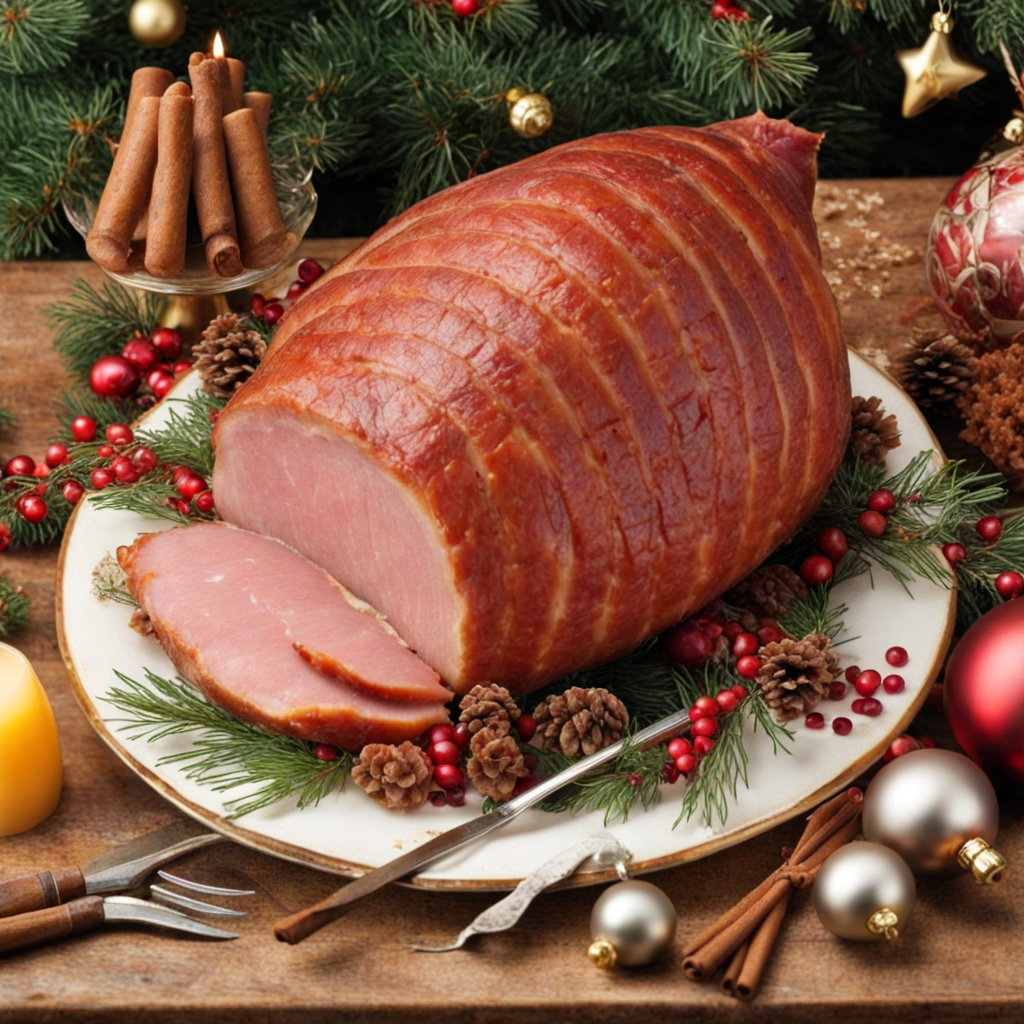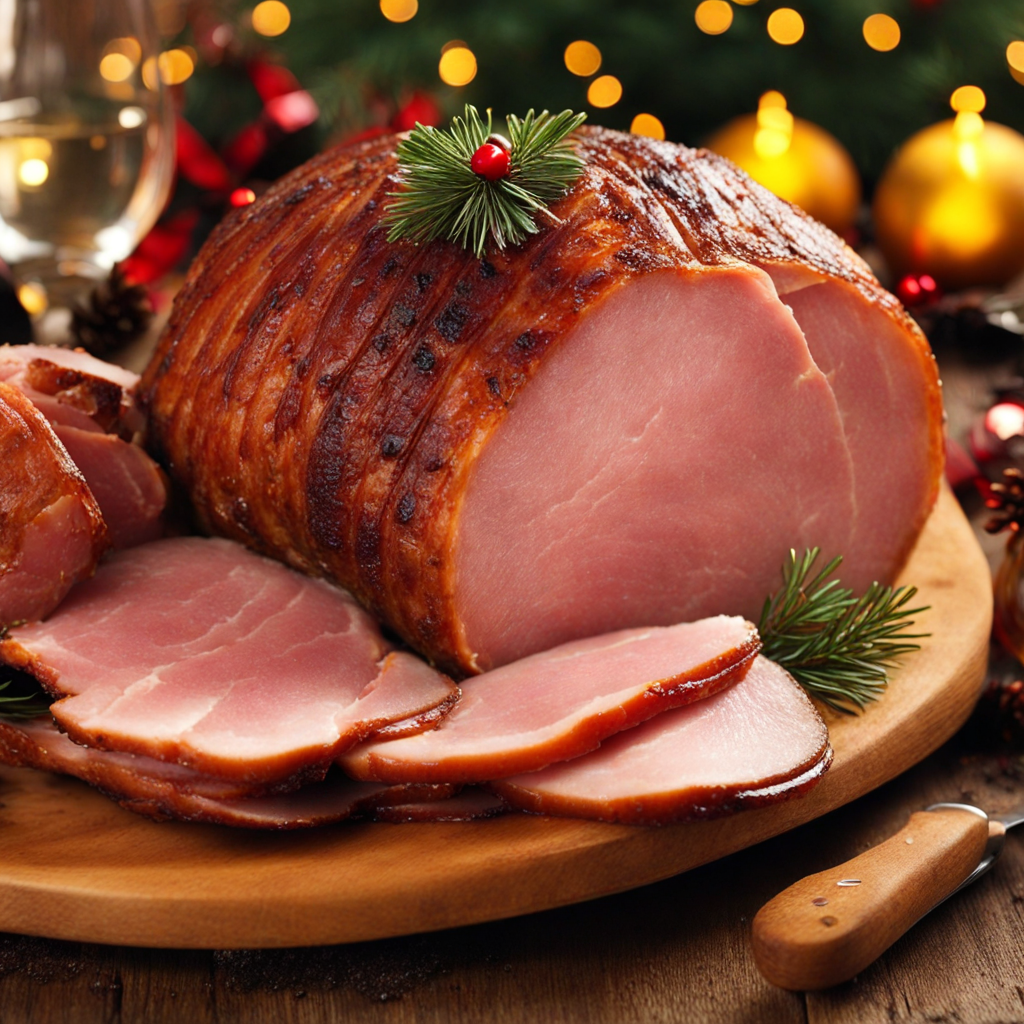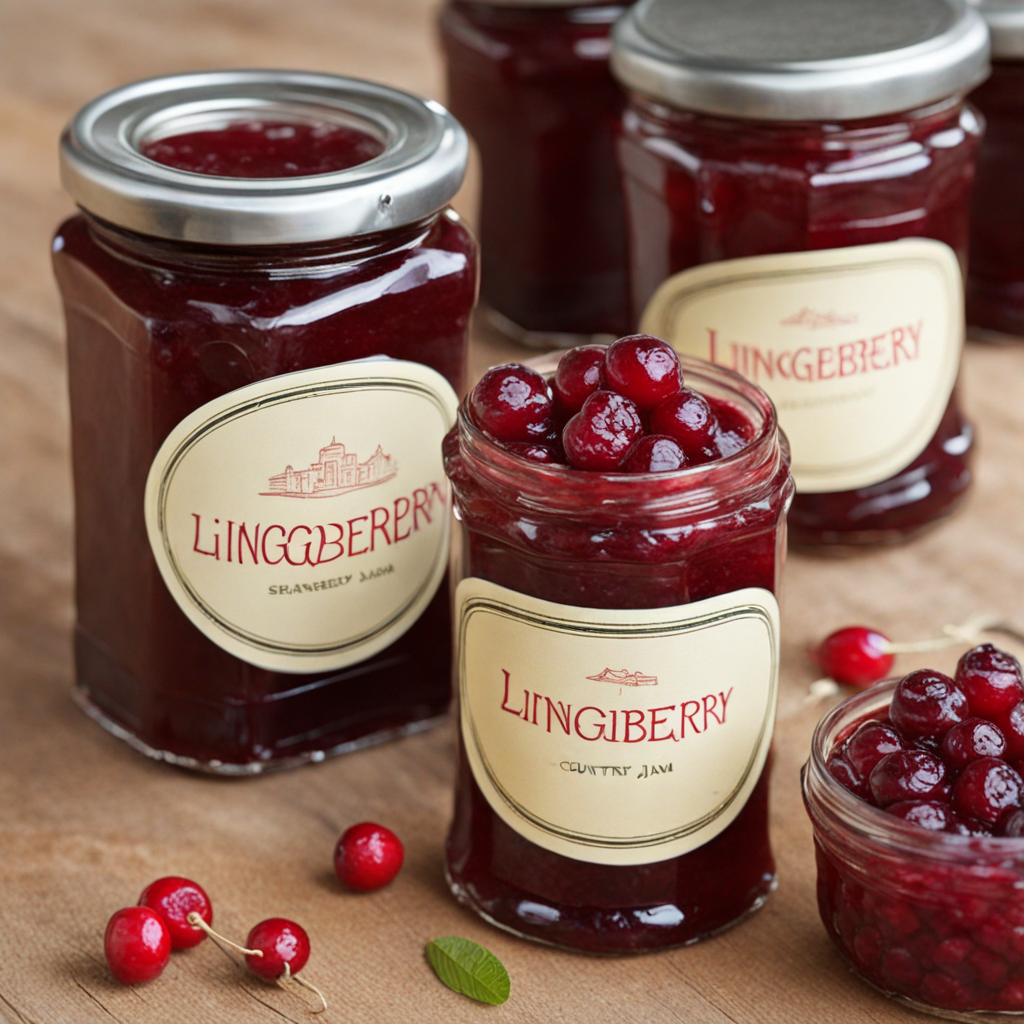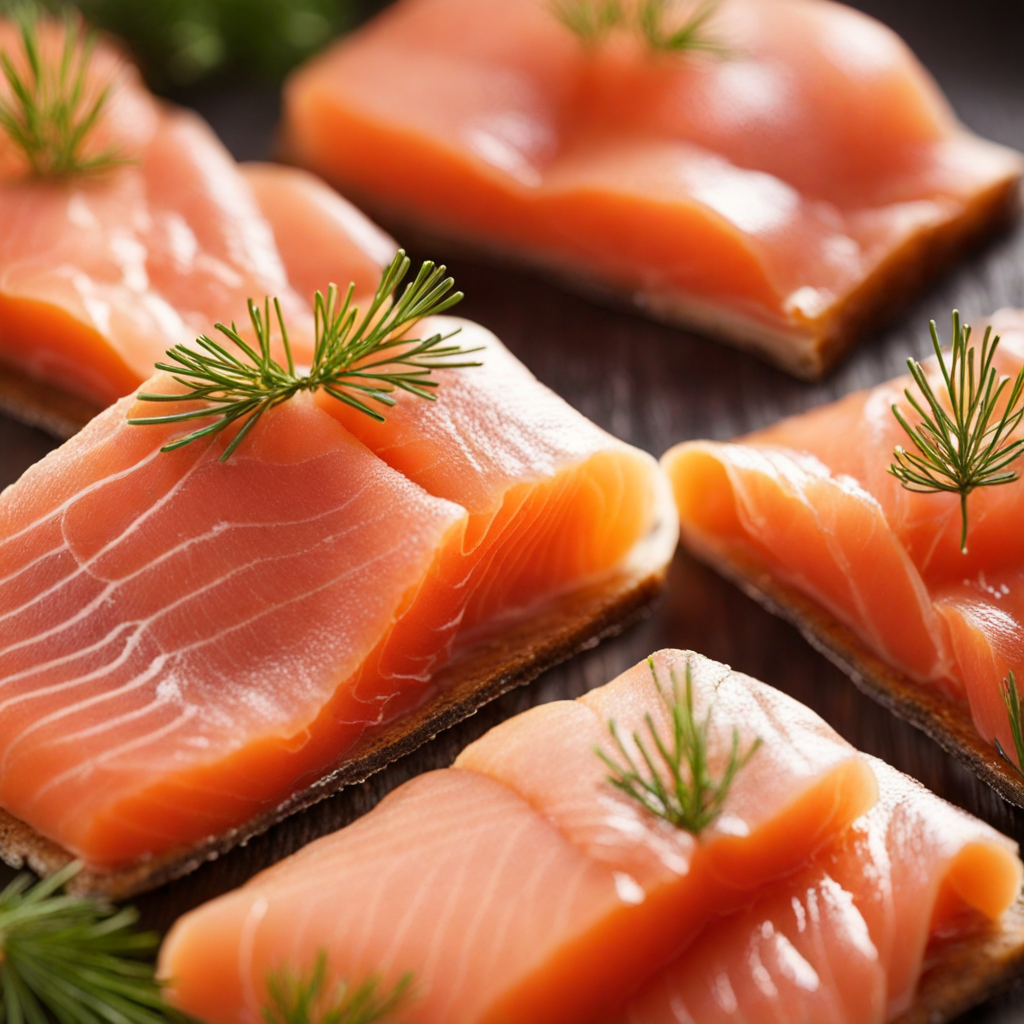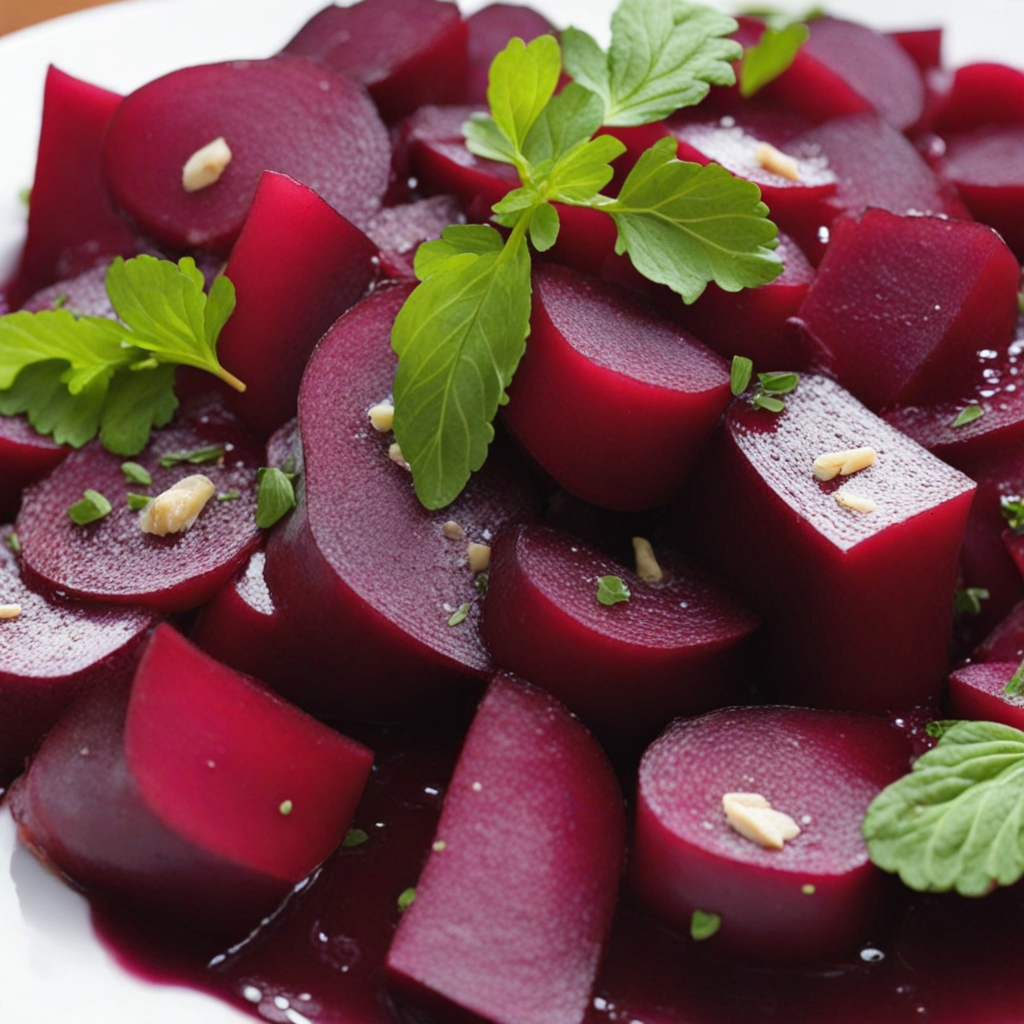Swedish Christmas Ham
Swedish Christmas Ham, or "Julskinka," is a beloved holiday dish that captures the essence of Swedish festive traditions. This succulent ham is typically made from the hind leg of a pig, which is cured and often smoked to enhance its rich flavor. The preparation begins with a careful brining process that infuses the meat with a blend of spices, including cloves and black pepper, giving it a distinctive aroma and taste. Once cooked to perfection, the ham is typically glazed with a mixture of mustard and sugar, creating a delightful caramelized crust that contrasts beautifully with the tender, juicy meat inside. Served as a centerpiece during the Christmas feast, Swedish Christmas Ham is often accompanied by a variety of traditional side dishes, such as creamy potato salad, pickled herring, and robust rye bread. The combination of flavors and textures creates a harmonious balance that makes each bite a celebration of the season. Families often enjoy the ham in various forms, whether sliced thin for sandwiches or served cold as part of a festive buffet, making it a versatile dish that brings everyone together. The experience of savoring Swedish Christmas Ham is not just about the meal; it’s also about the memories and traditions that surround it. As families gather around the table, enjoying the rich flavors and sharing stories, the ham becomes a symbol of warmth and togetherness during the holiday season. Each slice evokes a sense of nostalgia, connecting generations through the shared enjoyment of this classic Swedish delicacy.
How It Became This Dish
The History of Julskinka: Sweden's Festive Ham #### Origins and Early Development Julskinka, or Christmas ham, is an iconic element of Swedish holiday celebrations, particularly during the festive season of Christmas. This culinary tradition can be traced back to ancient practices of preserving meat, which were essential for survival in the harsh Nordic winters. The word "jul" means Christmas in Swedish, while "skinka" translates to ham, making Julskinka a literal representation of Christmas ham. The origins of Julskinka are closely tied to the pre-Christian traditions of Scandinavia. In times long past, the winter solstice marked a significant turning point in the year, celebrated with feasting and rituals intended to ensure good fortune and bountiful harvests. The pig, a symbol of prosperity and fertility, played a pivotal role in these festivities. It was customary for families to slaughter a pig in the fall, ensuring a supply of meat through the winter months. The practice of preparing a special ham for the winter solstice gradually evolved into the Christmas tradition we recognize today. #### Cultural Significance Julskinka holds a special cultural significance in Sweden, serving not just as a dish but as a symbol of hospitality and abundance. The ham is often the centerpiece of the Swedish julbord, a traditional Christmas buffet that features a wide array of dishes, including pickled herring, meatballs, and various cheeses. The preparation and presentation of Julskinka are steeped in ritual; it is typically glazed with a mixture of mustard and sugar, then baked to achieve a golden, caramelized exterior. The act of sharing Julskinka among family and friends represents the spirit of togetherness and gratitude, which are core values during the holiday season. In many homes, the preparation of Julskinka is a communal affair, with family members gathering to assist in the cooking and decorating of the ham. This tradition serves to strengthen familial bonds and create lasting memories. #### Development Over Time In the 19th century, with the rise of industrialization and urbanization, the production and consumption of food underwent significant changes. The introduction of refrigeration and improved transportation methods allowed for the preservation and distribution of Julskinka on a larger scale. The ham became more accessible to the growing urban population, and commercial production began to flourish. By the late 1800s, many Swedish households were purchasing ready-made Julskinka from local butchers or grocery stores, making it easier for families to partake in the tradition without the labor-intensive process of preparing the ham from scratch. In the early 20th century, Julskinka's popularity continued to rise, and it became a staple of Swedish Christmas celebrations. The dish was often accompanied by a variety of traditional sides, such as Janssons frestelse (a creamy potato and anchovy casserole) and various types of bread, further enriching the festive table. The emphasis on local and seasonal ingredients became more pronounced, with many families opting for locally sourced hams to maintain a connection to the land and its agricultural heritage. As Sweden became more integrated into the global culinary landscape in the late 20th century, Julskinka began to see variations and adaptations. While the traditional preparations remained prevalent, innovative chefs started experimenting with flavors and techniques. Glazing options expanded beyond the classic mustard and sugar to include spices such as cloves, allspice, and even exotic ingredients like maple syrup. These modern interpretations showcase the evolving nature of culinary traditions while honoring their historical roots. #### Modern-Day Celebrations Today, Julskinka remains integral to Swedish Christmas celebrations, symbolizing both continuity and change. The modern Swedish Christmas table, or "julbord," is a vibrant tapestry of flavors and textures, with Julskinka taking pride of place. Families often serve the ham cold, sliced thinly, alongside a variety of condiments, such as lingonberry sauce and homemade mustard. In contemporary Sweden, the practice of preparing Julskinka has taken on new dimensions. For many, the holiday season is a time for culinary experimentation, where traditional recipes are blended with international influences. Social media has played a significant role in sharing these adaptations, leading to a renaissance of interest in traditional Swedish cuisine. Home cooks and professional chefs alike are rediscovering the joys of preparing Julskinka, often posting their creations online and inspiring others to join in the festive spirit. Moreover, sustainability has become a critical consideration in modern food practices, prompting many Swedes to seek out ethically sourced meats and local ingredients. The farm-to-table movement has reinforced the significance of Julskinka not only as a delicious centerpiece but also as a representation of responsible consumption and community support. #### Conclusion The journey of Julskinka from ancient pagan rituals to a beloved holiday tradition illustrates the rich tapestry of Swedish culture and history. As a culinary emblem of Christmas, it embodies the values of family, generosity, and celebration. The evolution of Julskinka reflects broader changes in society, including urbanization, globalization, and the growing emphasis on sustainability. In a world that often feels disconnected, the tradition of gathering around the table to enjoy Julskinka serves as a reminder of the importance of connection—both to our cultural heritage and to each other. As Swedes continue to share this festive dish with loved ones, Julskinka remains a delicious link between past and present, embodying the warmth and spirit of the holiday season.
You may like
Discover local flavors from Sweden


